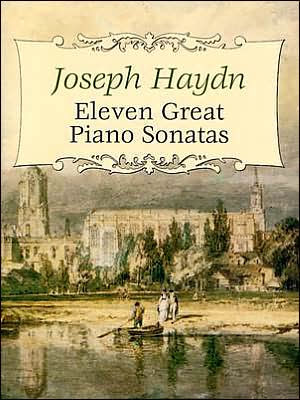The towering composer who perfected the early symphonic form and invented the modern string quartet also left his indelible mark on the sonata. Joseph Haydn pioneered the development of sonata form, and although the composer favored a three-movement structure from which he seldom varied, his works display extensive experimentation. Reprinted from an authoritative Breitkopf & Härtel edition, this compilation comprises eleven of the master's finest sonatas — from short, simple early works to the more complex thematic developments and variations that followed. Highlights include the sublime virtuoso Sonatas No. 50 in C Major and No. 52 in E-flat Major, and Sonata No. 40 in G, a superb combination of popular appeal and high art.
The towering composer who perfected the early symphonic form and invented the modern string quartet also left his indelible mark on the sonata. Joseph Haydn pioneered the development of sonata form, and although the composer favored a three-movement structure from which he seldom varied, his works display extensive experimentation. Reprinted from an authoritative Breitkopf & Härtel edition, this compilation comprises eleven of the master's finest sonatas — from short, simple early works to the more complex thematic developments and variations that followed. Highlights include the sublime virtuoso Sonatas No. 50 in C Major and No. 52 in E-flat Major, and Sonata No. 40 in G, a superb combination of popular appeal and high art.

Eleven Great Piano Sonatas
128
Eleven Great Piano Sonatas
128Paperback

Product Details
| ISBN-13: | 9780486438245 |
|---|---|
| Publisher: | Dover Publications |
| Publication date: | 09/09/2004 |
| Series: | Dover Music for Piano Series |
| Pages: | 128 |
| Product dimensions: | 8.42(w) x 10.98(h) x 0.32(d) |
